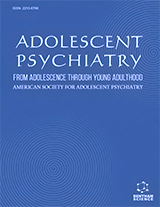Abstract
Background: Epidemiologic studies have shown that persons suffering from psychotic disorders are at increased risk of violent behavior. Several factors have been shown to predict violent behavior among persons with psychosis. However, prior research is limited in that these factors have not been explored simultaneously within the same study.
Methods: The current study, therefore, aimed to determine which demographic, clinical, cognitive, and developmental characteristics were associated with an increased likelihood of violence among patients diagnosed with a psychotic disorder and which combination of these best predicted a history of violence. Participants (n=53) completed measures of demographics, violence risk, psychotic and personality symptoms, trauma, psychopathy and cognitive functioning.
Results: Bivariate relationships were conducted to compare the history of violent behavior between all variables. Additionally, a binary logistic regression was run predicting participants’ history of violence. Several demographic, cognitive, clinical, and developmental factors were associated with increased odds of having a history of violence. The overall correct classification rate for the model was 92.2%, with 87.5% of participants without a history of violence and 91.4% with a history of violence being correctly classified. The model included antisocial personality traits, poor behavioral controls, head injury, not accepting responsibility, lacking goals, prior supervision failures, and HCR-20 total score.
Conclusion: The binary logistic regression model showed good accuracy in predicting a history of violence in persons with psychosis. These findings are consistent with prior research and can inform efforts at risk assessment and identification of treatment targets for people with a psychotic disorder who are at highest risk of violence.
Keywords: Schizophrenia, violence, psychosis, psychopathy, trauma, violence risk.
Graphical Abstract
[http://dx.doi.org/10.1371/journal.pmed.1000120] [PMID: 19668362]
[http://dx.doi.org/10.1080/23744006.2015.1033154]
[http://dx.doi.org/10.1176/ps.41.7.761] [PMID: 2142118]
[http://dx.doi.org/10.1037/a0016311] [PMID: 19702378]
[http://dx.doi.org/10.1001/archgenpsychiatry.2008.537] [PMID: 19188537]
[http://dx.doi.org/10.1016/j.schres.2008.12.005] [PMID: 19174322]
[http://dx.doi.org/10.1016/j.psychres.2013.05.003] [PMID: 23790604]
[http://dx.doi.org/10.1111/eip.12022] [PMID: 23343404]
[http://dx.doi.org/10.1080/17522439.2011.626867] [PMID: 23155365]
[http://dx.doi.org/10.1016/j.schres.2016.04.006] [PMID: 27107632]
[http://dx.doi.org/10.1016/j.jpsychires.2016.07.027] [PMID: 27518177]
[http://dx.doi.org/10.1002/jts.2490030204]
[http://dx.doi.org/10.1001/archpsyc.63.5.490] [PMID: 16651506]
[http://dx.doi.org/10.1001/archpsyc.55.5.393] [PMID: 9596041]
[http://dx.doi.org/10.1016/j.psychres.2005.05.017] [PMID: 16879872]
[http://dx.doi.org/10.1016/0010-0277(94)90018-3] [PMID: 8039375]
[http://dx.doi.org/10.1093/schbul/13.2.261] [PMID: 3616518]
[http://dx.doi.org/10.1002/jts.2490080106] [PMID: 7712061]
[http://dx.doi.org/10.1192/bjp.bp.107.042630] [PMID: 18700216]
[http://dx.doi.org/10.1192/bjp.bp.114.147926] [PMID: 25858178]












